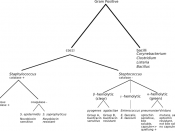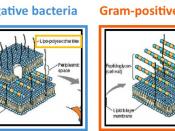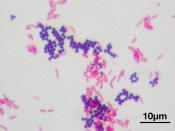1
Exam 1
Essay Portion
Starch, cellulose, dextran, and glycogen are polysaccharides. How are they similar? To what are their different properties due? Why cant an enzymes that hydrolyzes starch degrade cellulose?
Starch - a polysaccharide carbohydrate consisting of a large number of glucose monosaccharide units joined together by glycosidic bonds. Amylose is a planar polymer of glucose linked mainly by ñ(1âÂÂ4) bonds. It can be made of several thousand glucose units. It is one of the two components of starch, the other being amylopectin. Amylose structure The ñ(1âÂÂ4) bonds promote the formation of a helix structure.
Amylopectin is a highly branched polymer of glucose found in plants. It is one of the two components of starch, the other being amylose. It is soluble in water.
Glucose units are linked in a linear way with ñ(1âÂÂ4) bonds. Branching takes place with ñ(1âÂÂ6) bonds occurring every 24 to 30 glucose units.
Glycogen - Glycogen is a highly branched polymer that is better described as a dendrimer of about 60,000 glucose residues and has a molecular weight between 106 and 107 daltons (~4.8 million). Most of the glucose units are linked by ñ-1,4 glycosidic bonds, approximately 1 in 12 glucos residues also makes alpha-1,6 glycosidic bond with a second glucose, which results in the creation of a branch. So, glycogen is the "animal equivalent"of amylopectin and is more branched.
Cellulose - Cellulose is a polysaccharide consisting of a linear chain of several hundred to over ten thousand ò(1âÂÂ4) linked D-glucose units.
Cellulose is the structural component of the primary cell wall of green plants. So it has beta glucose and is linear and not branched.
Enzymes are chemicals (proteins) that are directed towards a specific function. All enzymes are unique. Only a specific enzyme with a specific substrate will create...


